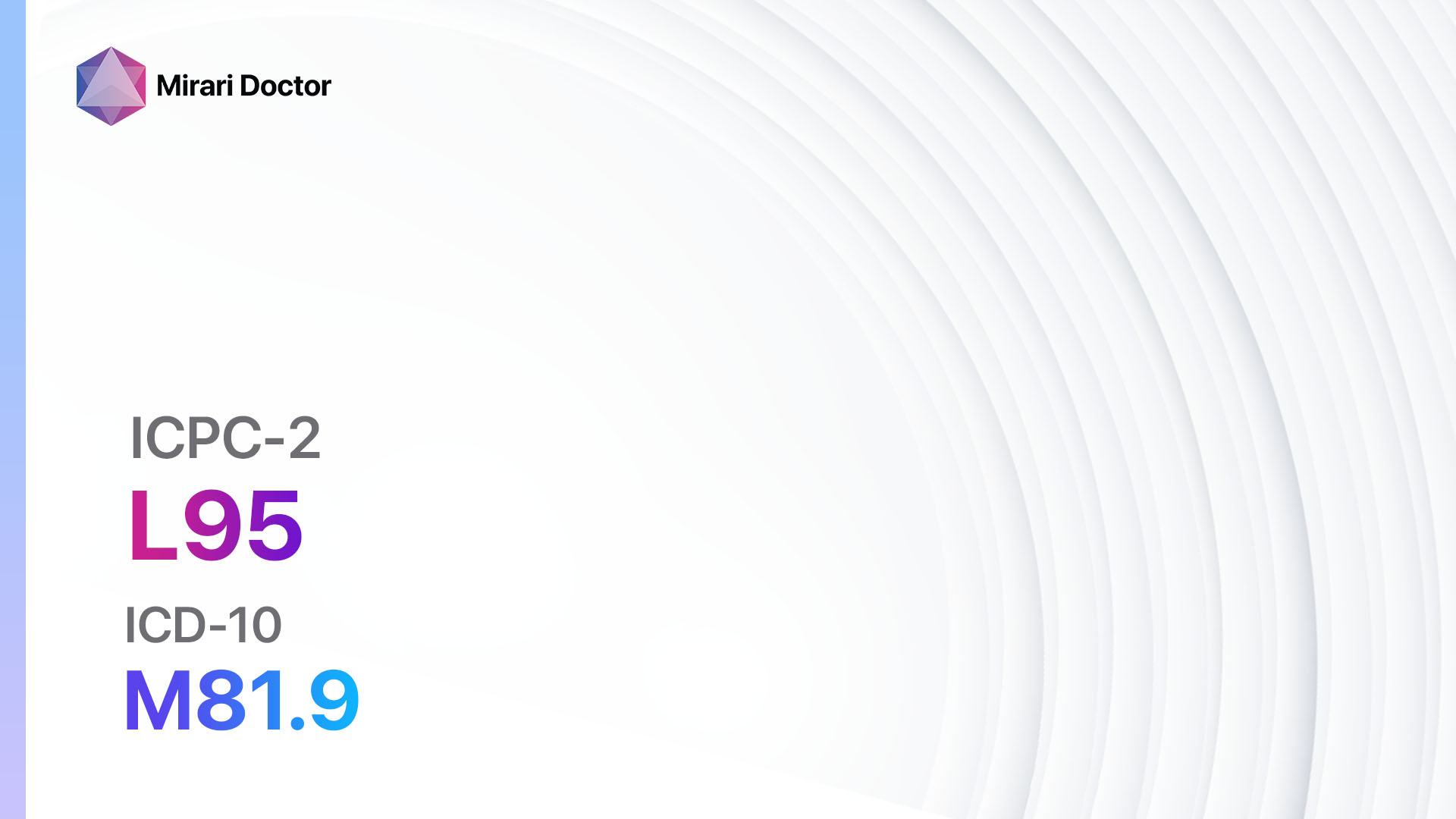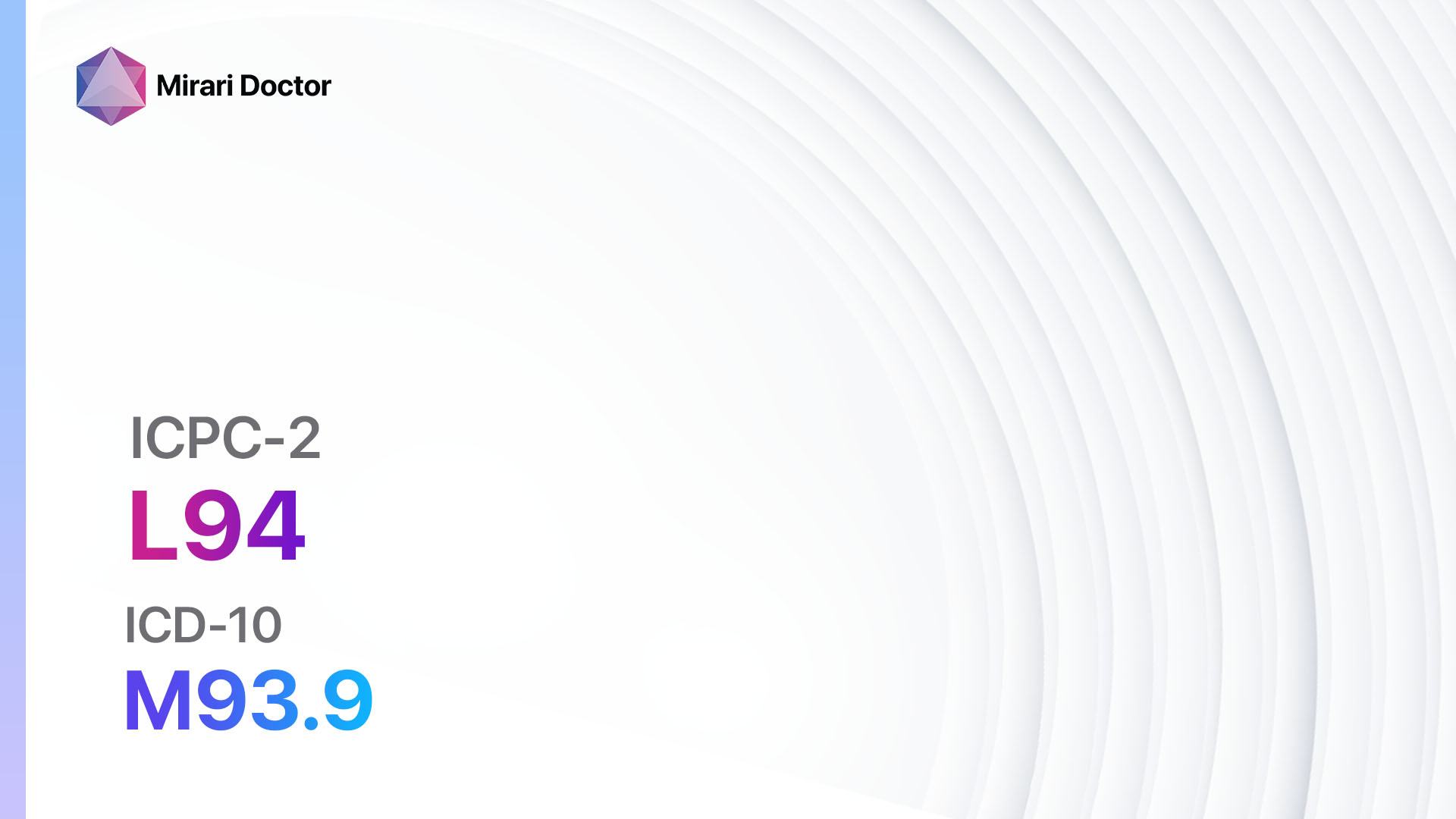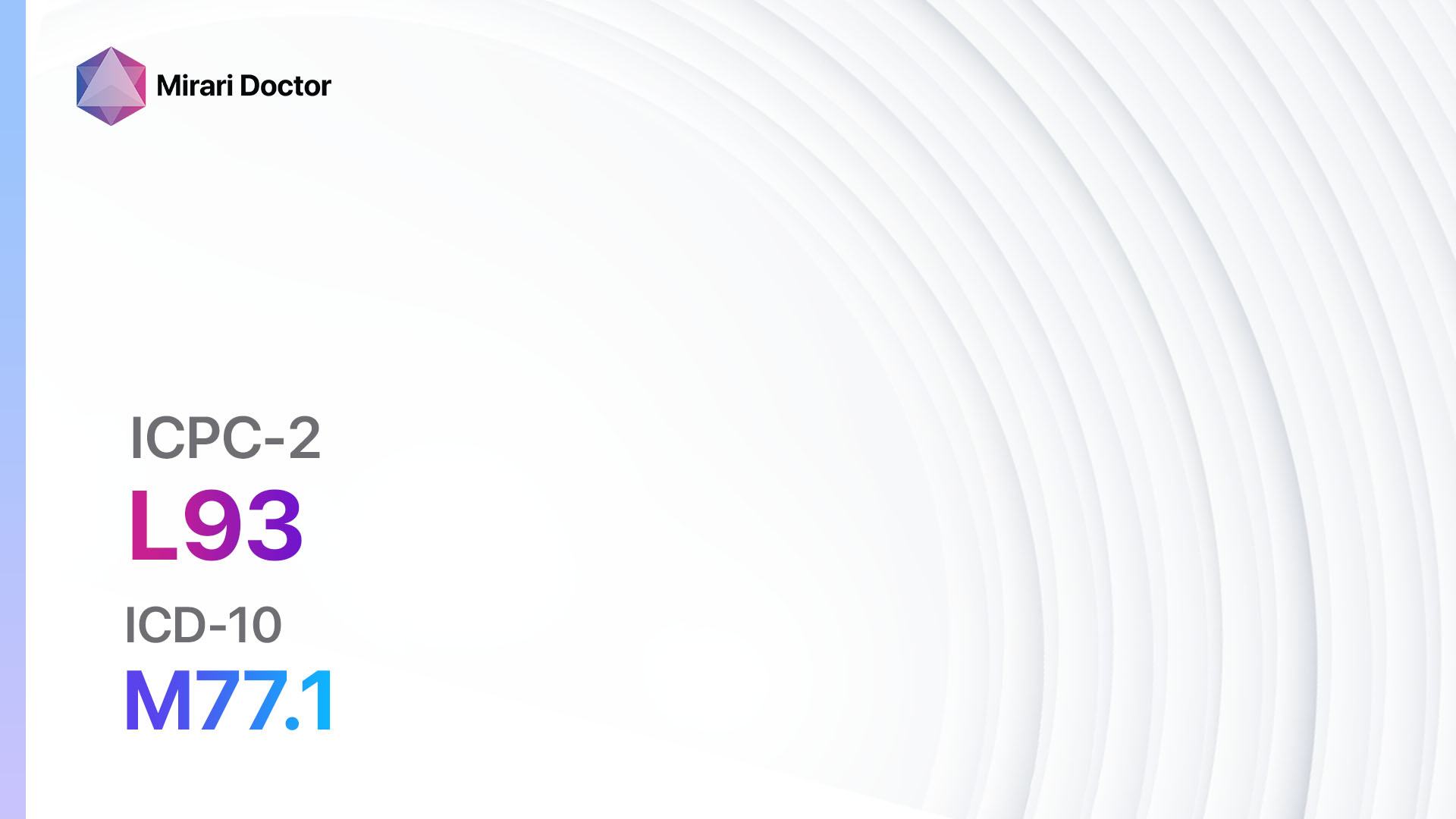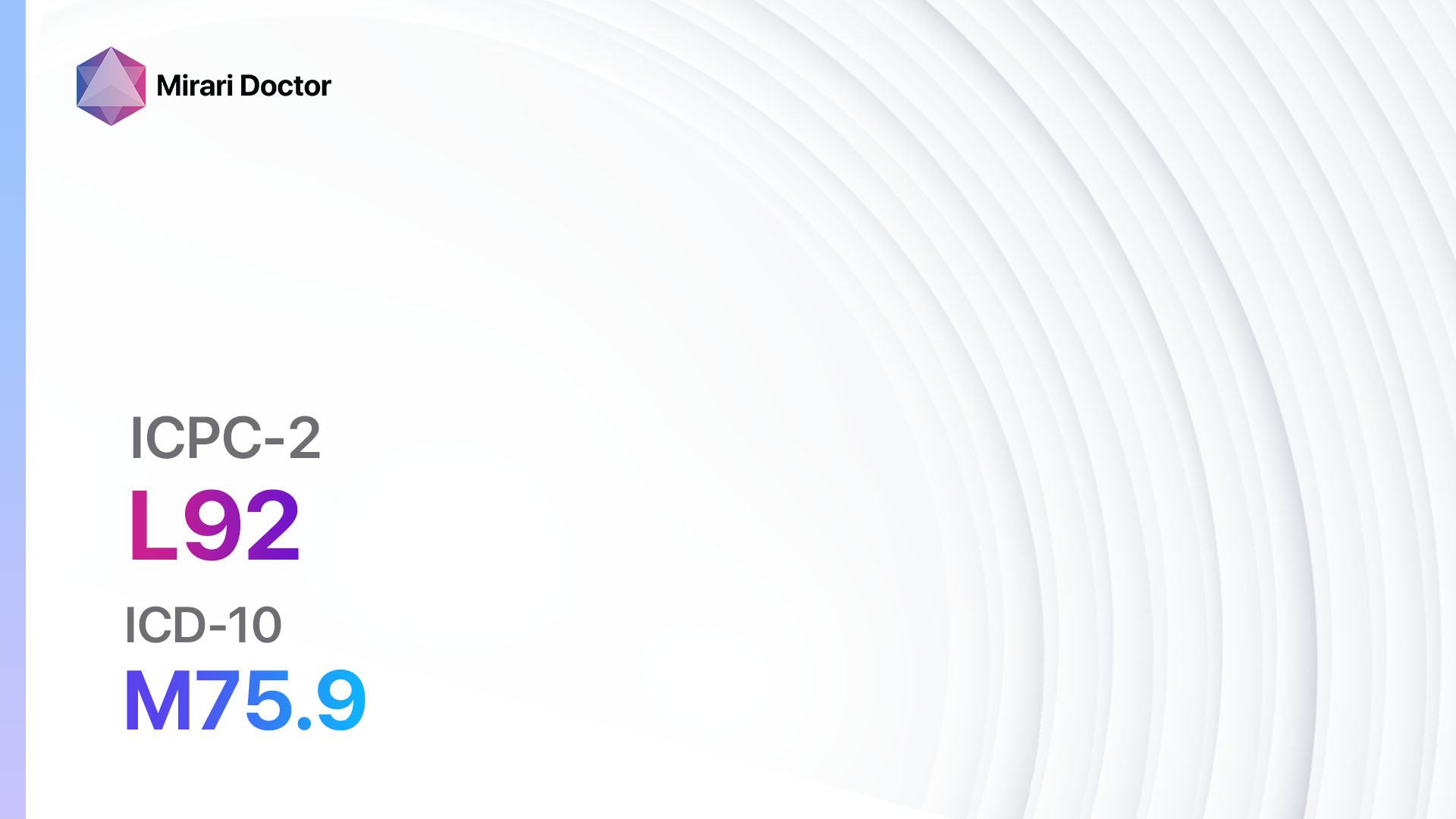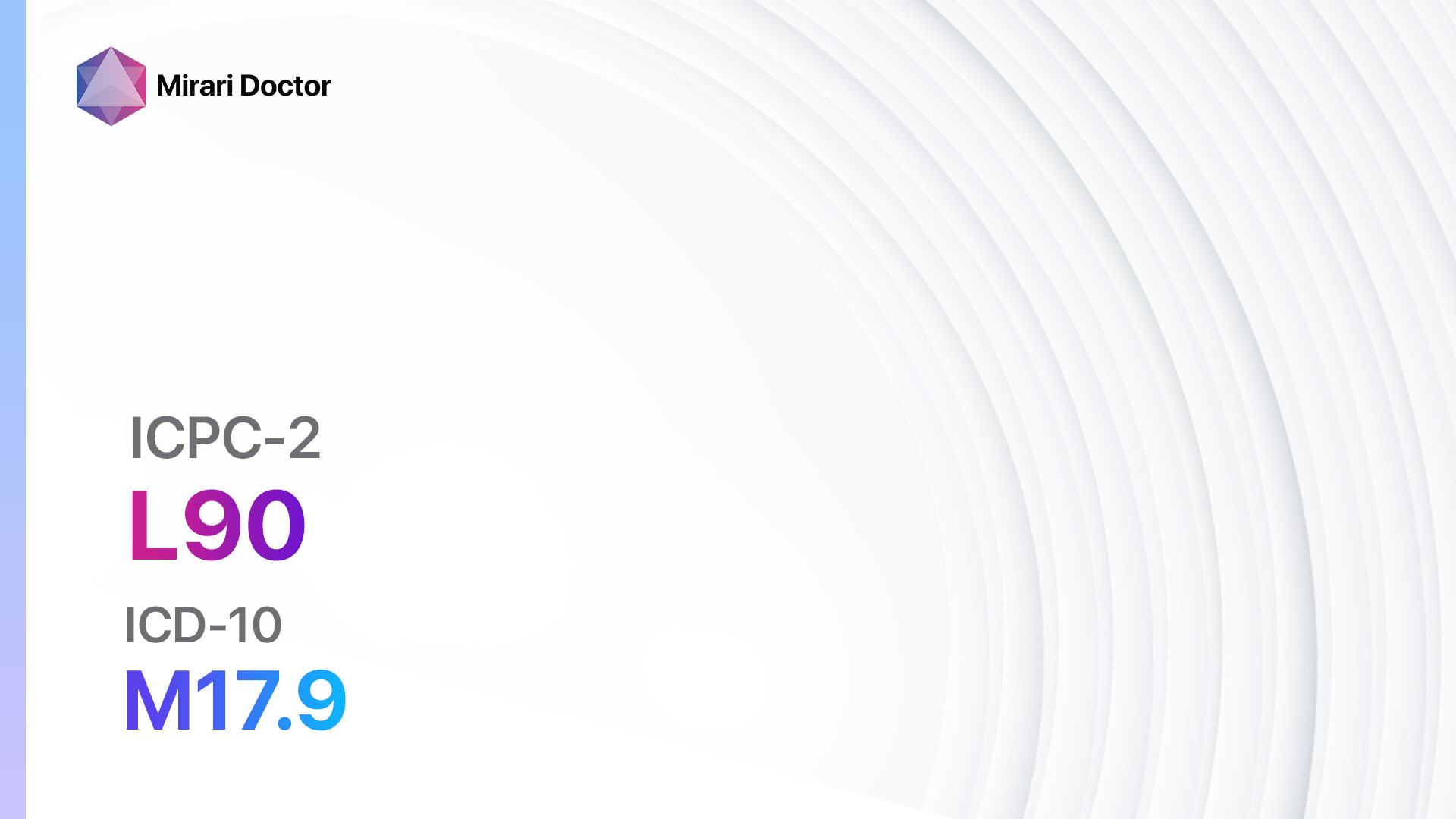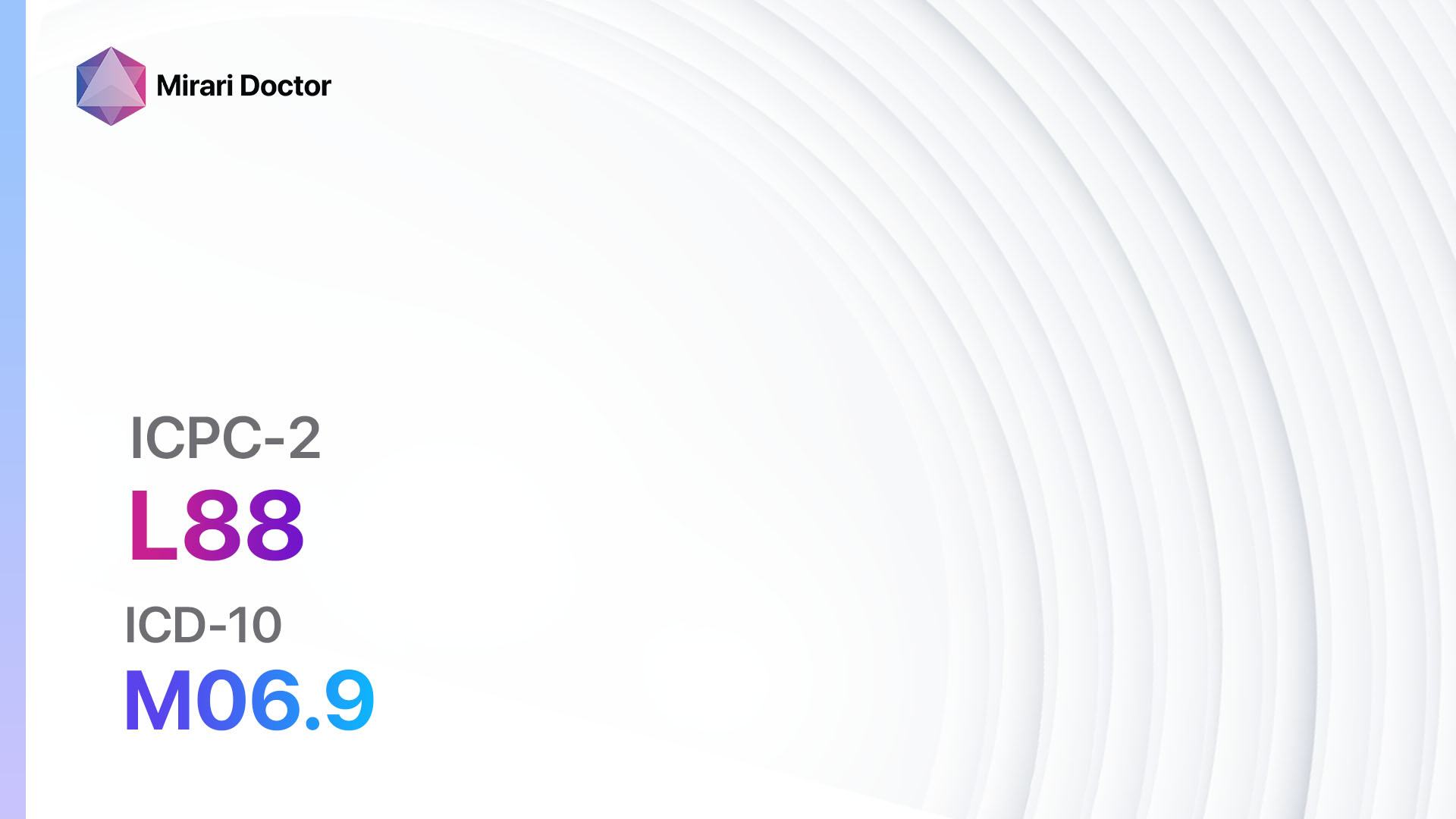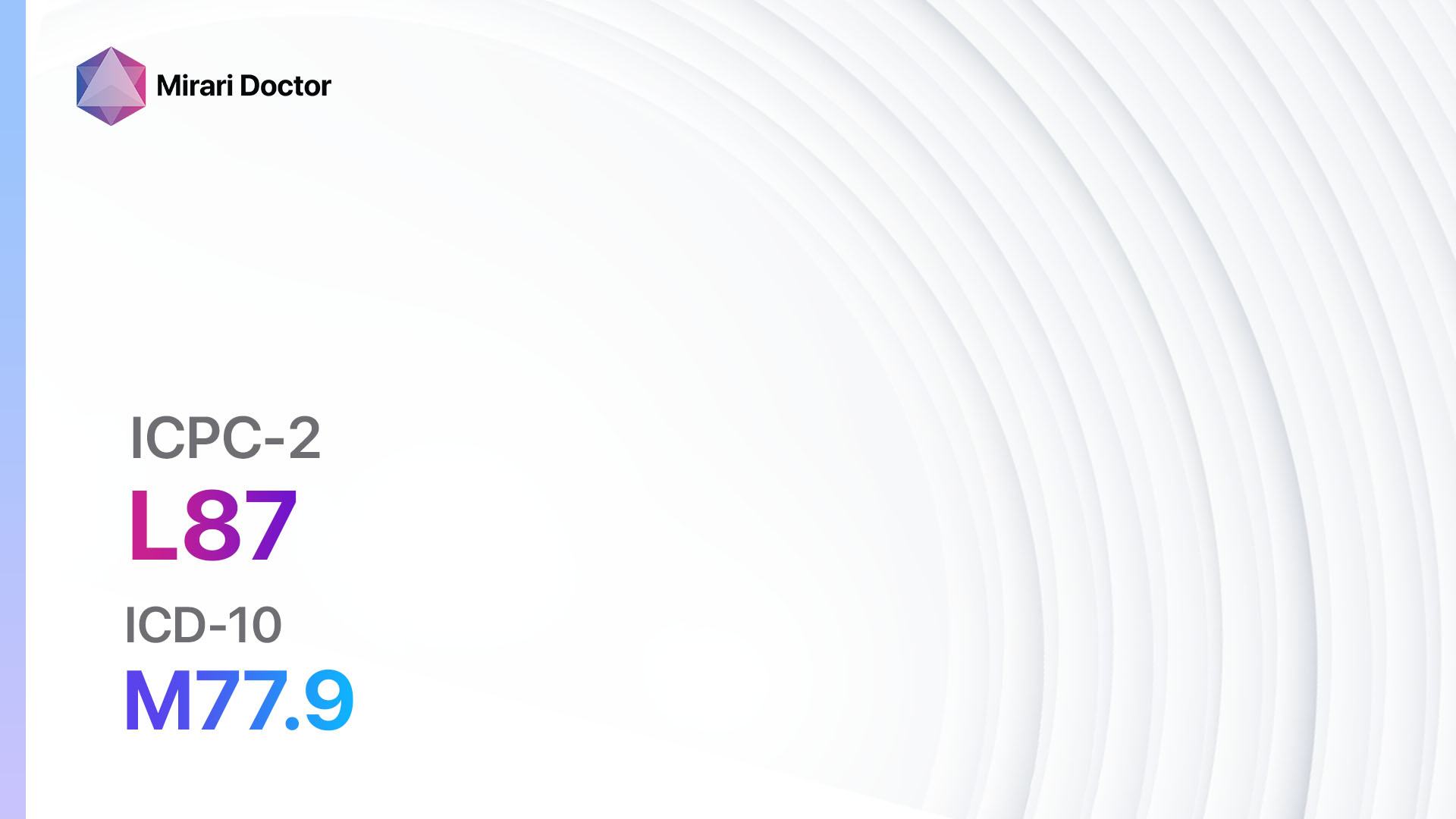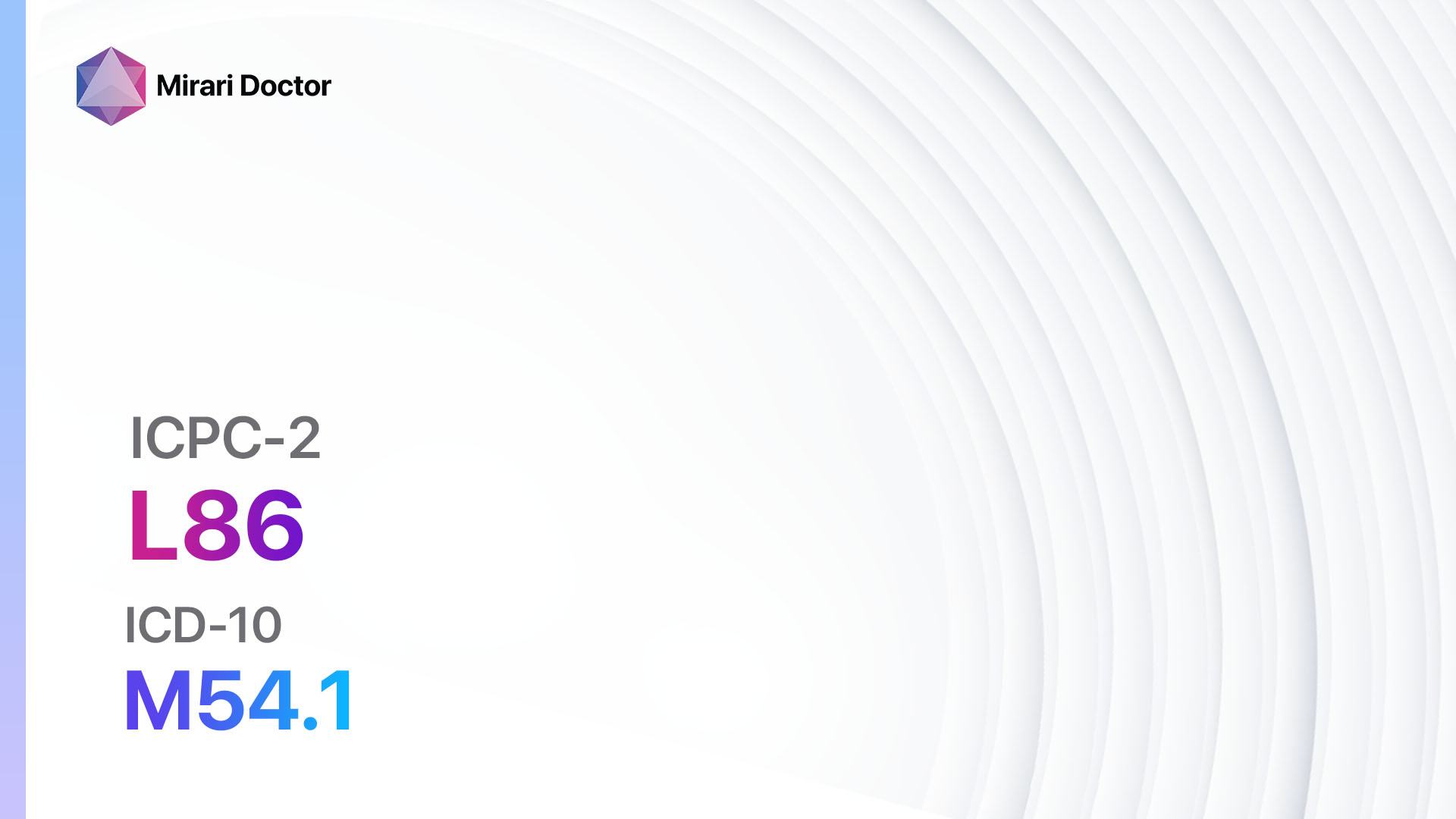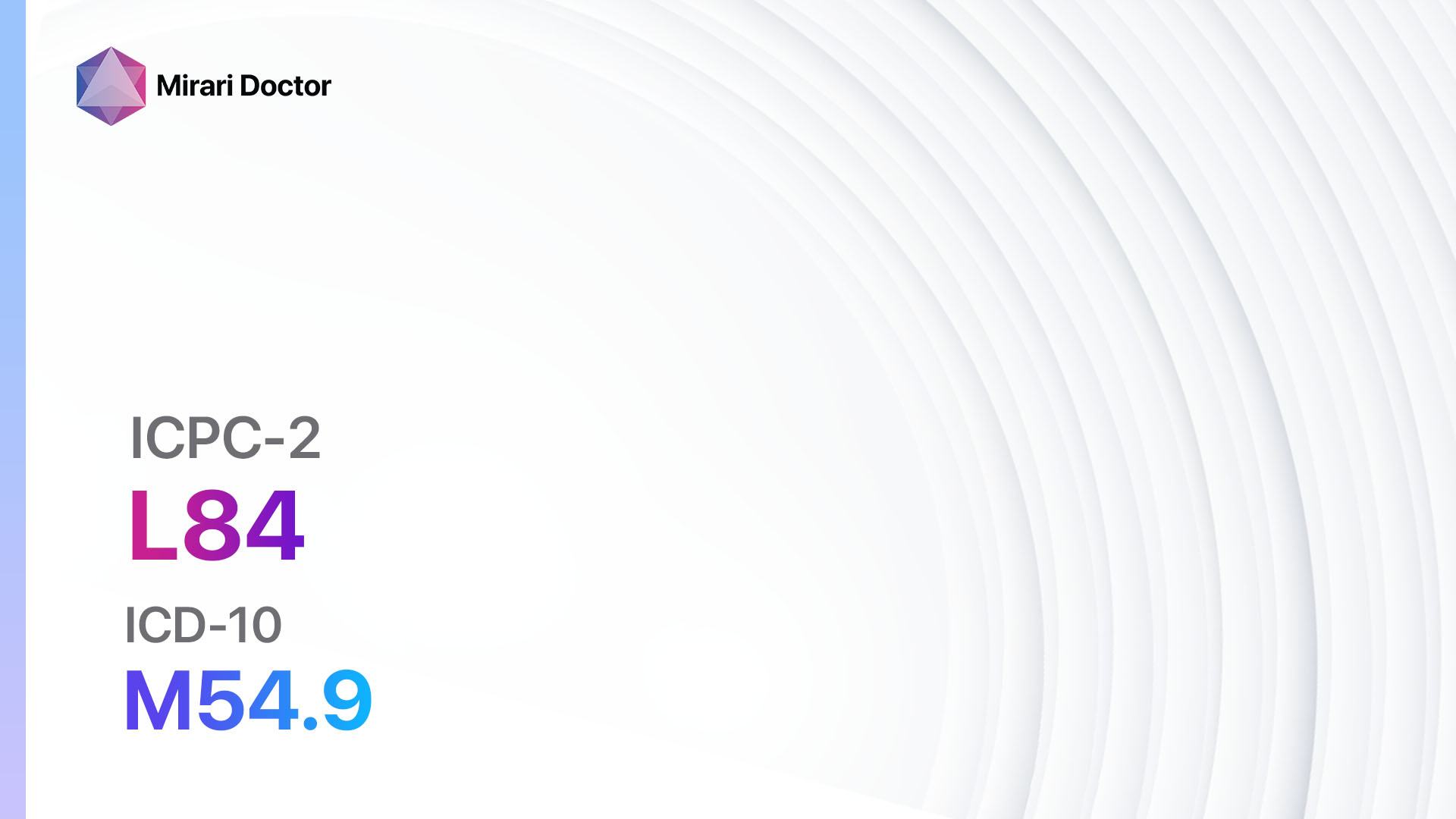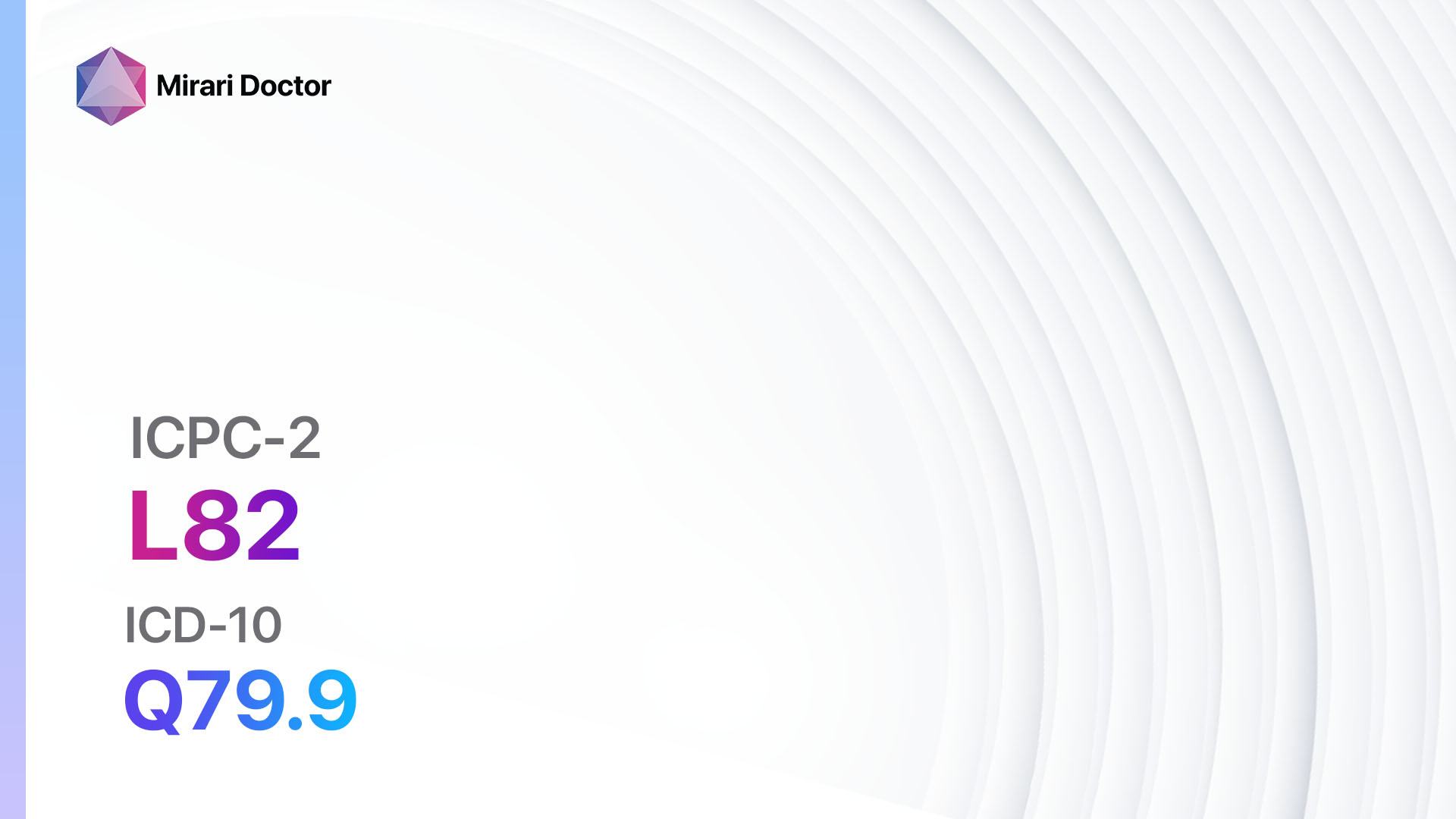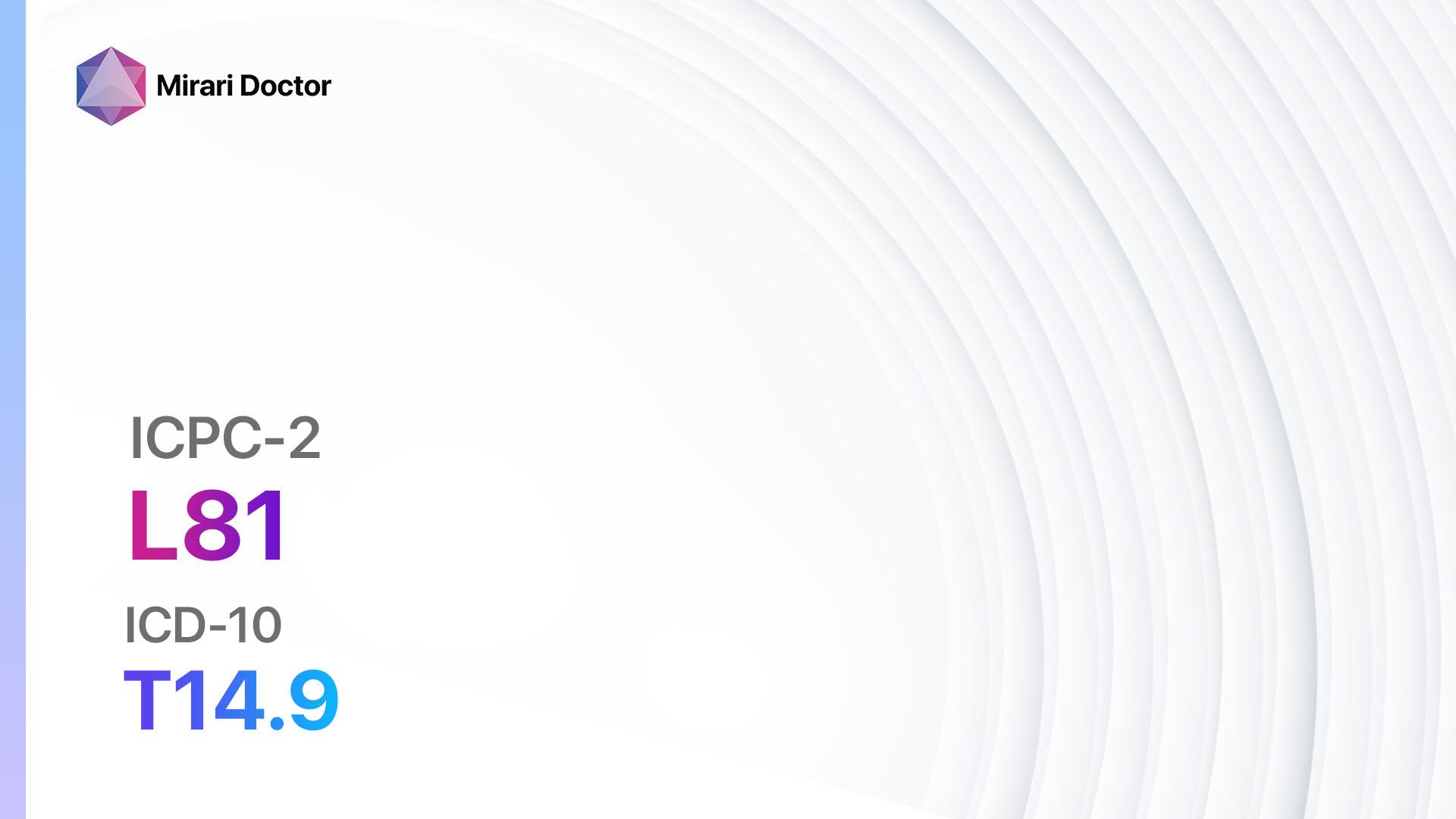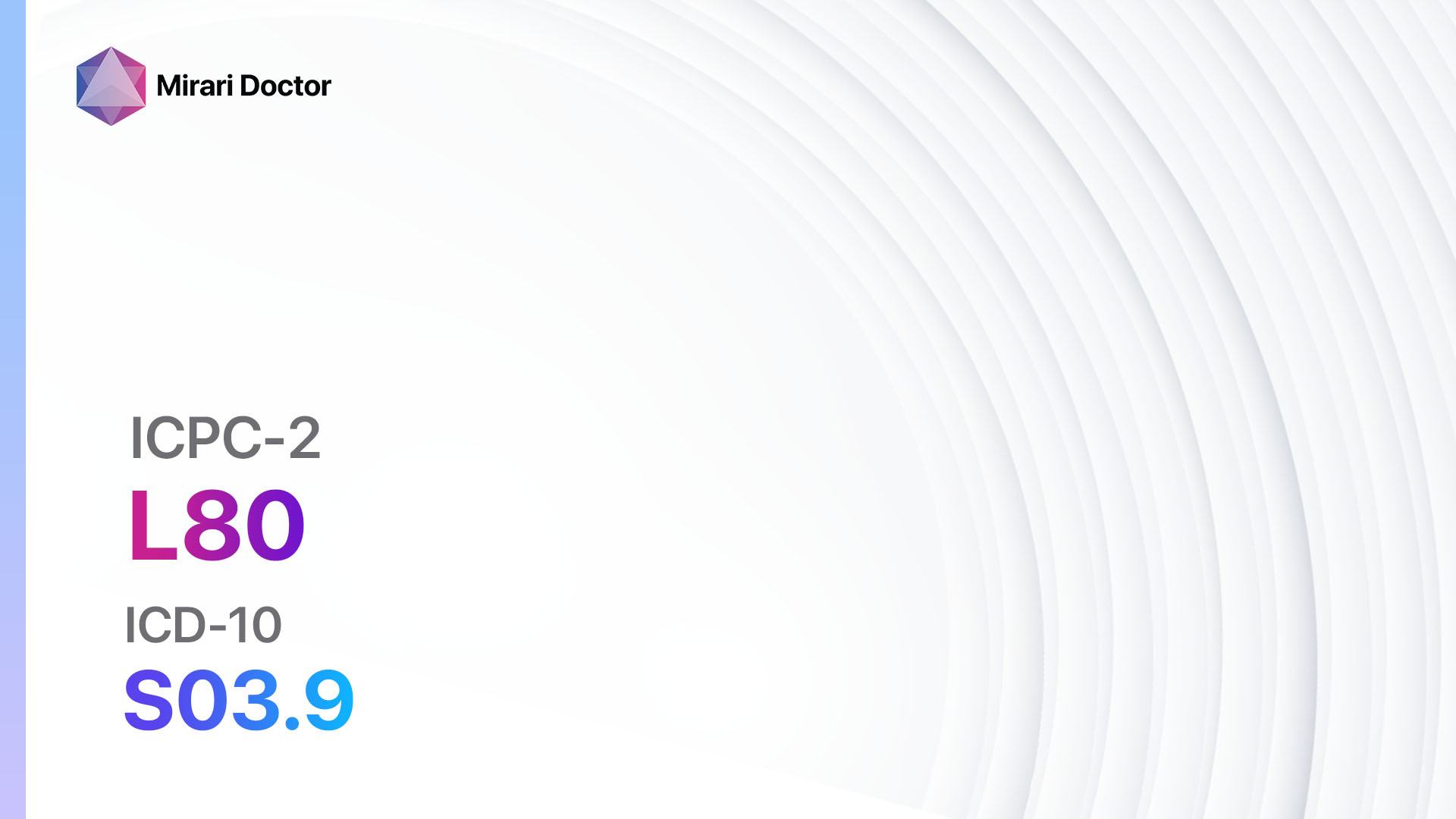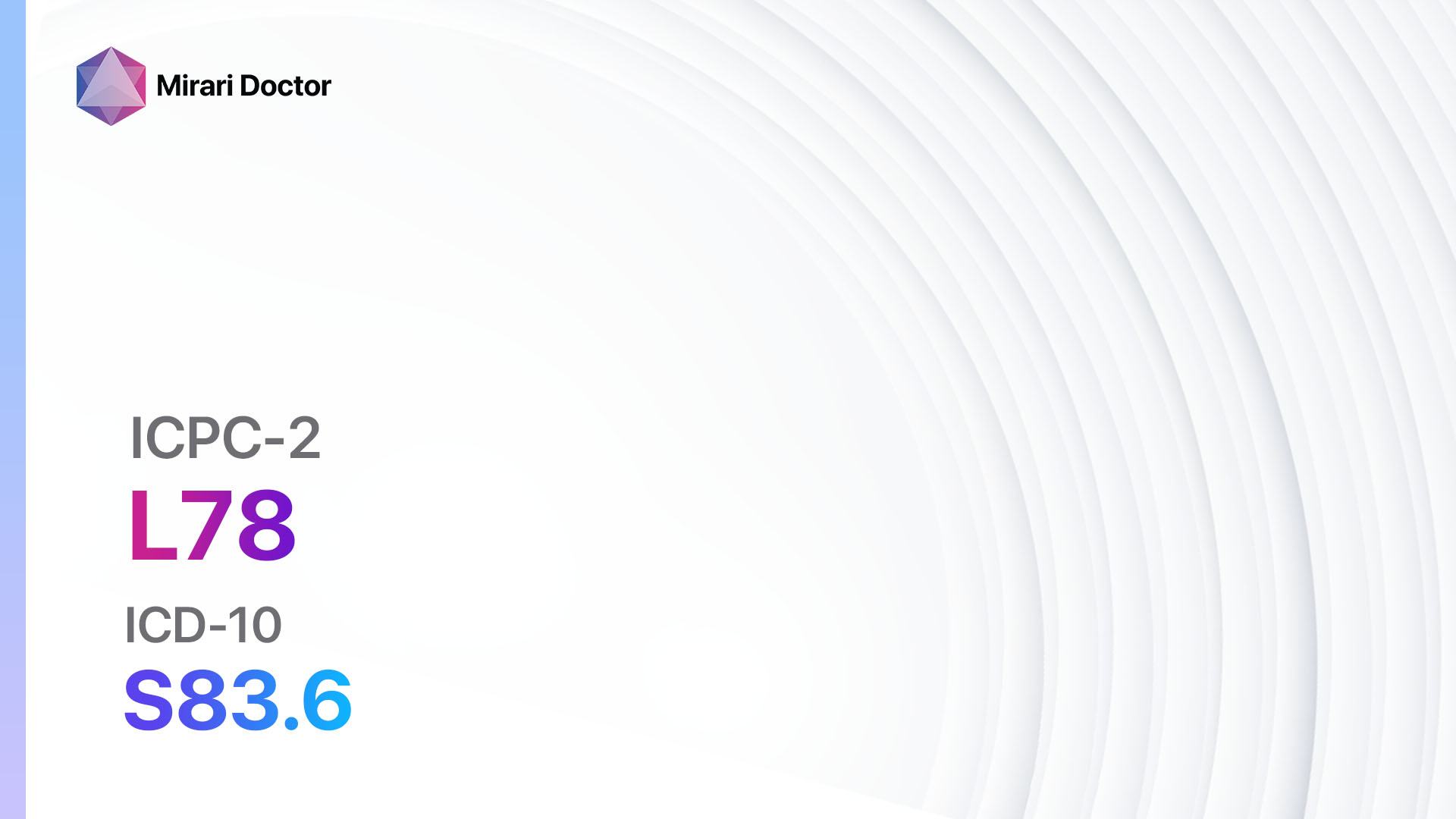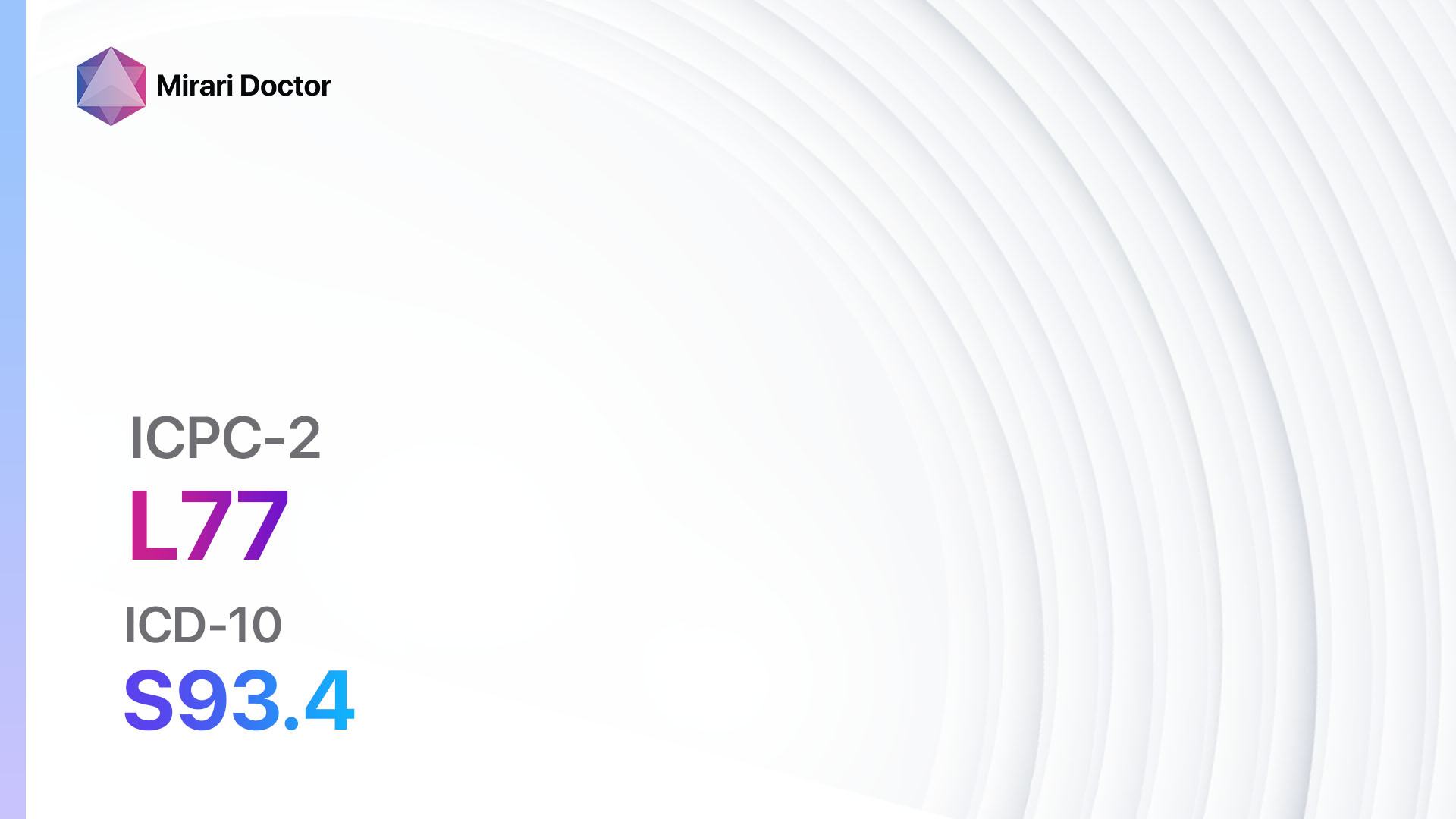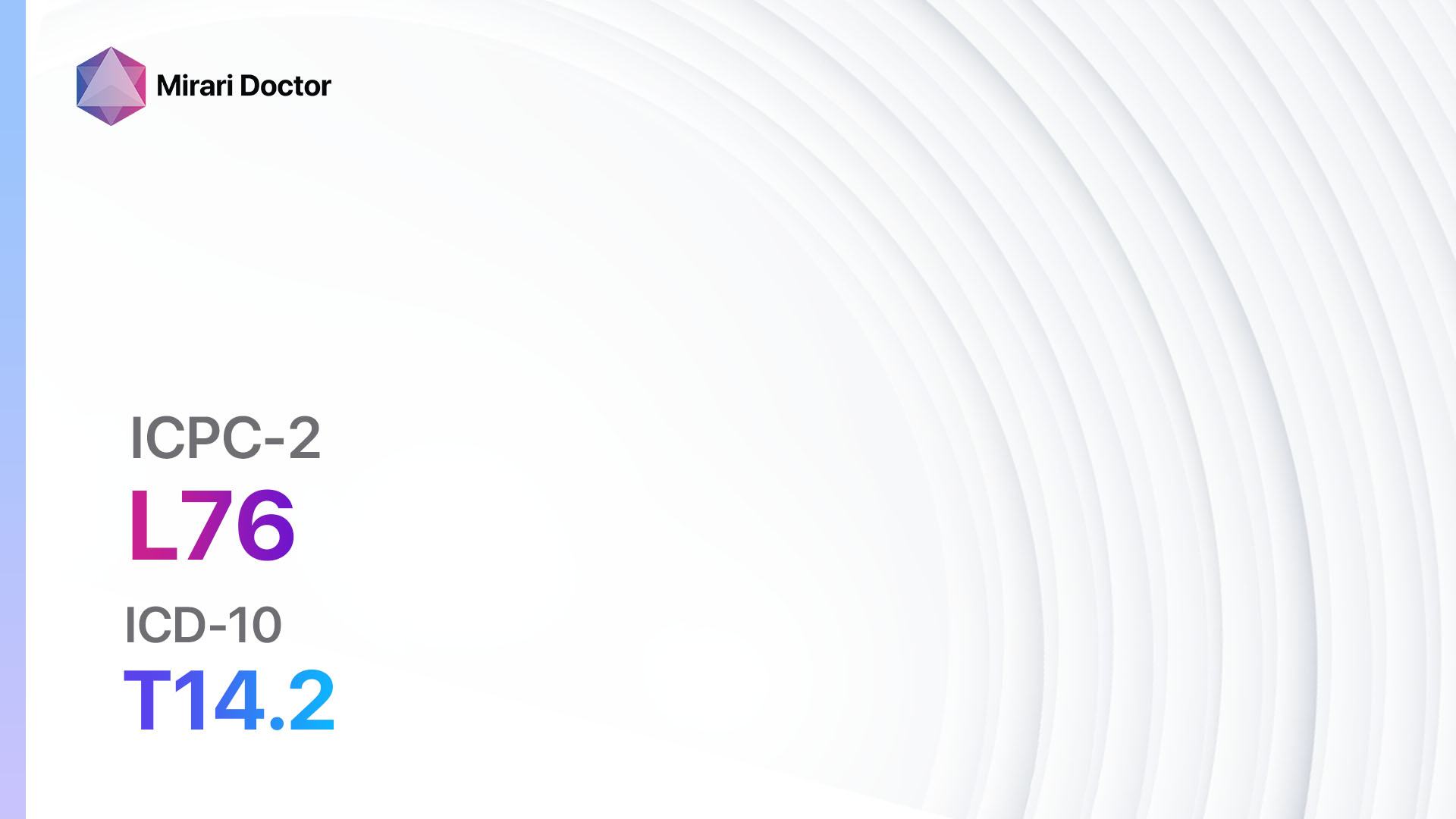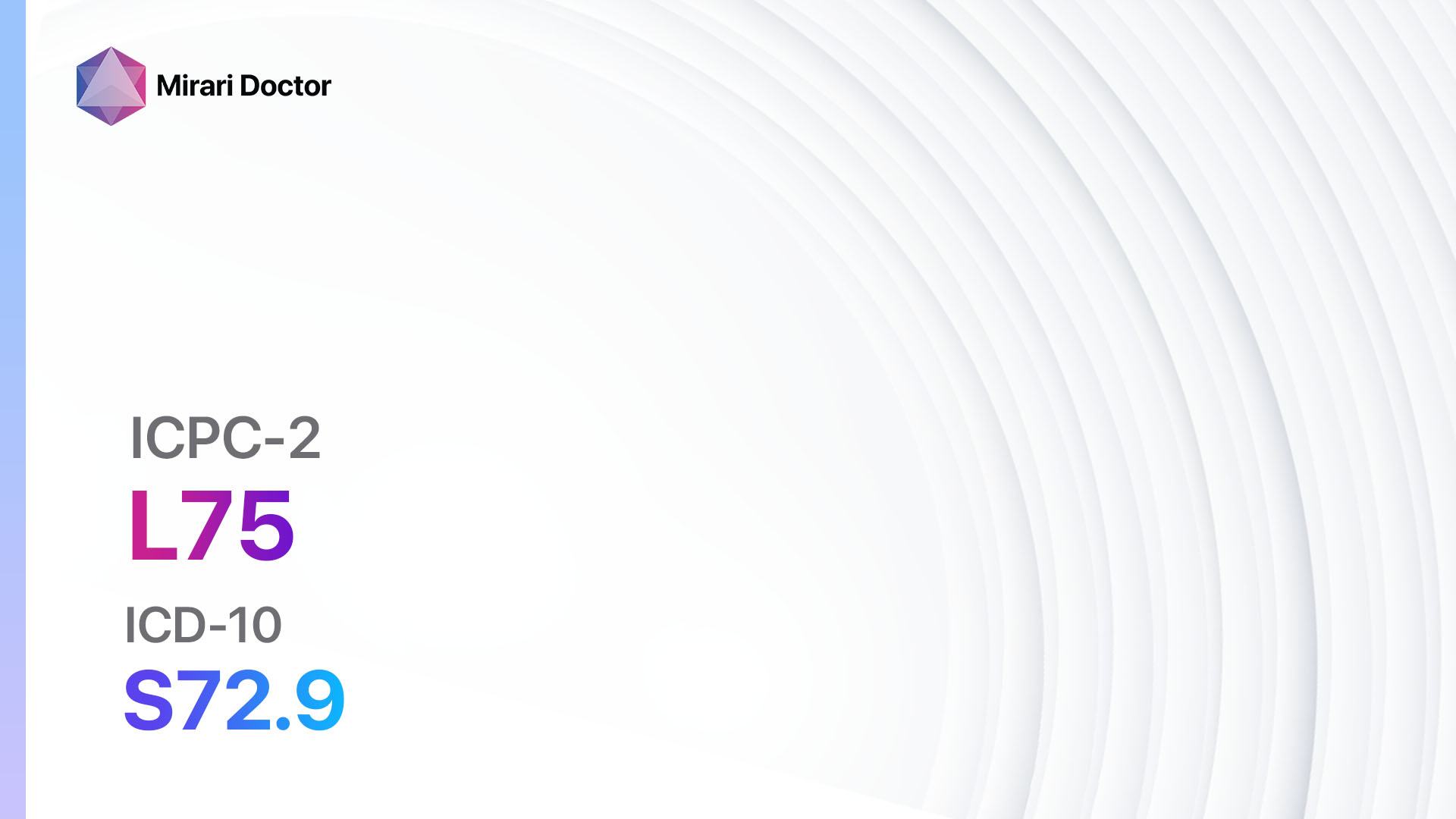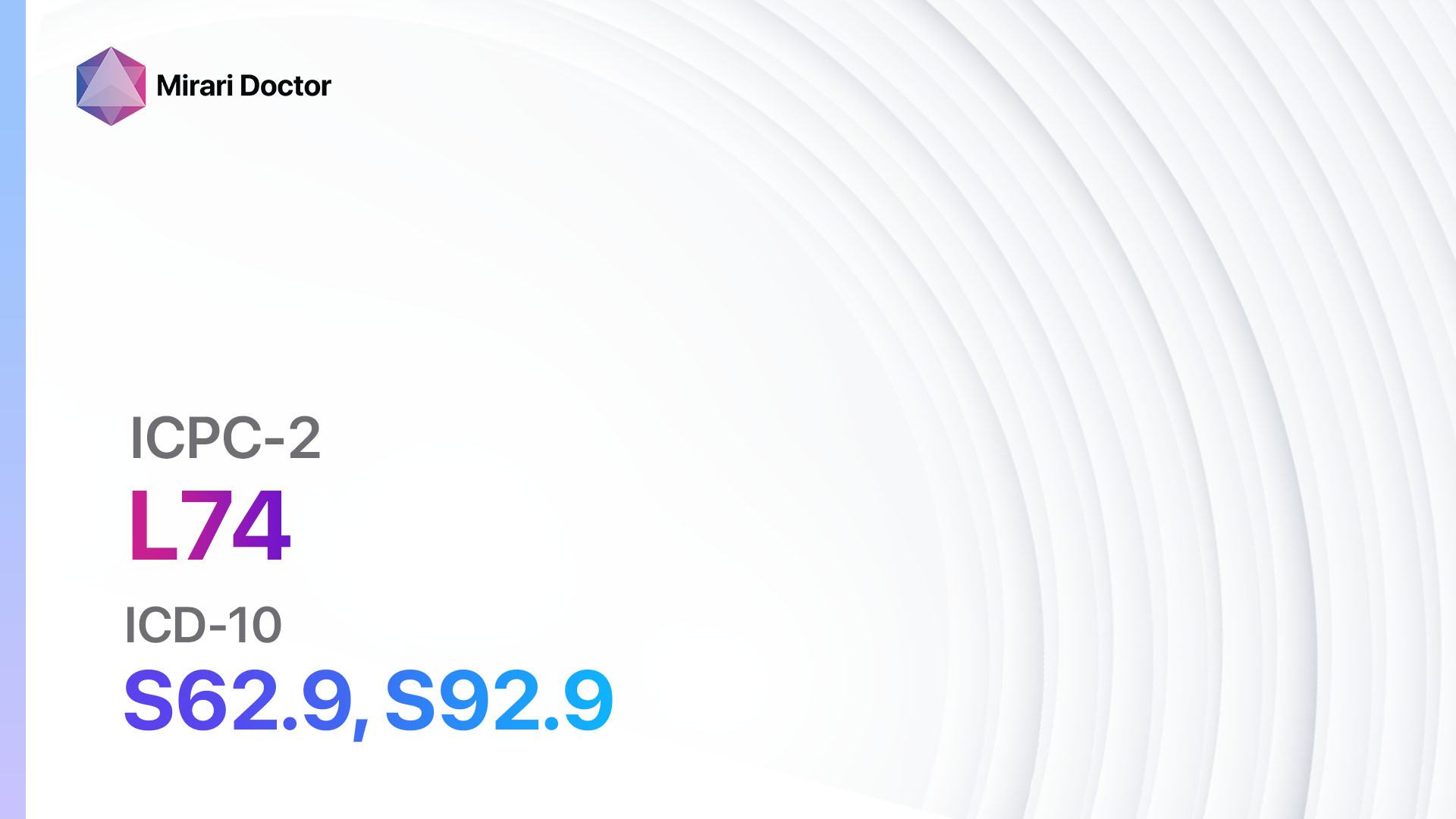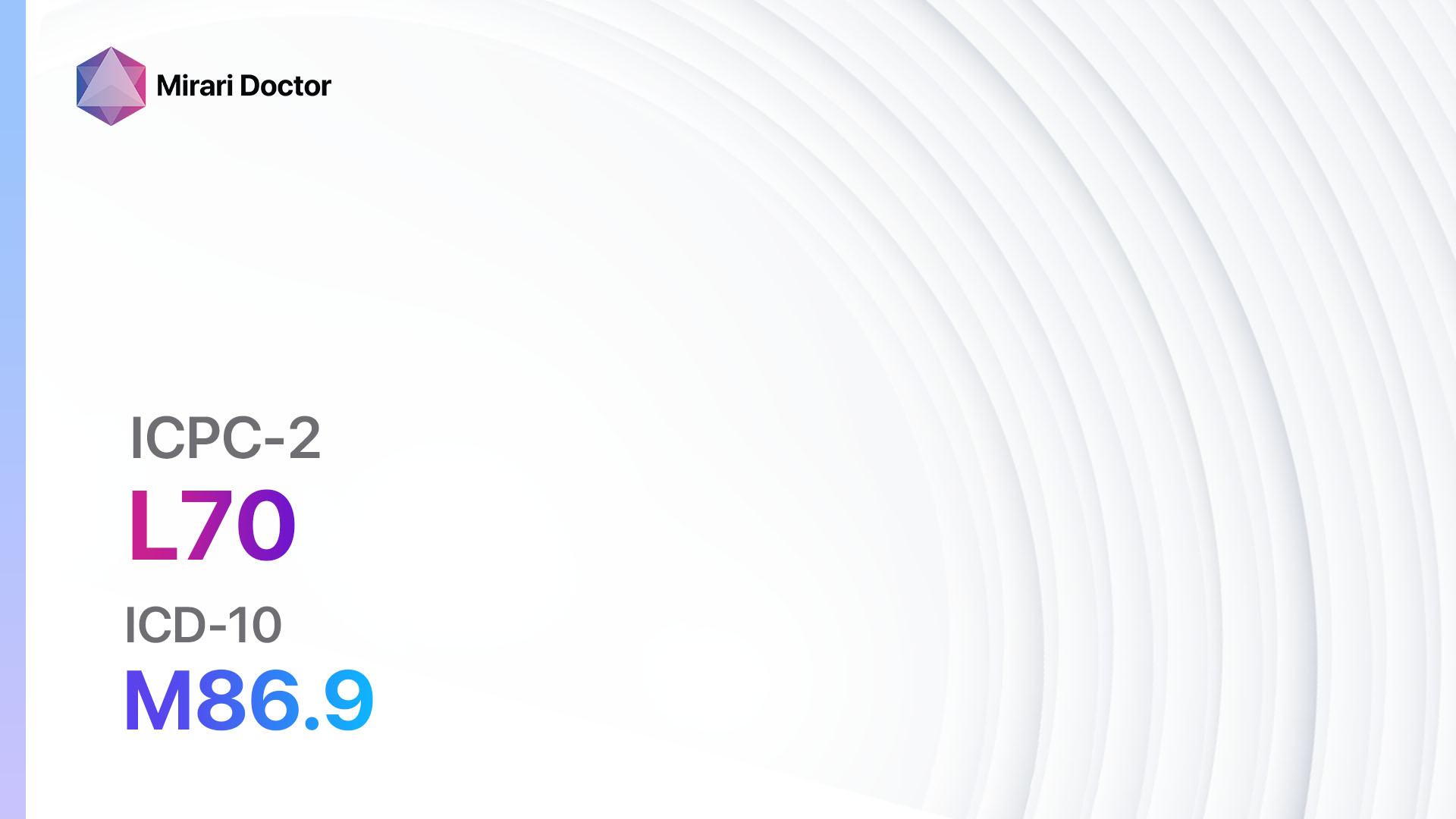
Introduction
Infections of the musculoskeletal system, also known as musculoskeletal infections, are bacterial or fungal infections that affect the bones, joints, muscles, or surrounding soft tissues[1]. These infections can cause significant pain, swelling, and limited mobility, and if left untreated, can lead to serious complications[2]. The aim of this guide is to provide healthcare professionals with a comprehensive overview of the diagnostic steps, possible interventions, and patient education strategies for managing infections of the musculoskeletal system.
Codes
- ICPC-2 Code: L70 Infections musculoskeletal system[3]
- ICD-10 Code: M86.9 Osteomyelitis, unspecified[4]
Symptoms
- Pain: Patients may experience localized pain in the affected area, which can be severe and worsen with movement[5].
- Swelling: Swelling and inflammation may be present in the affected area[6].
- Redness: The skin over the infected area may appear red and warm to the touch[7].
- Limited mobility: Patients may have difficulty moving the affected limb or joint[8].
- Fever: In some cases, patients may develop a fever as a result of the infection[9].
Causes
- Bacterial infection: The most common cause of musculoskeletal infections is bacterial infection, often resulting from a break in the skin or a surgical procedure[10].
- Fungal infection: Fungal infections can also cause musculoskeletal infections, particularly in individuals with weakened immune systems or those who have been exposed to contaminated soil or water.
Diagnostic Steps
Medical History
- Gather information about the patient’s risk factors, such as recent surgeries, trauma, or underlying medical conditions that may increase the risk of infection.
- Ask about the patient’s symptoms, including the duration and severity of pain, swelling, and limited mobility.
- Inquire about any recent travel or exposure to contaminated environments.
Physical Examination
- Perform a thorough physical examination, paying close attention to the affected area.
- Assess for signs of inflammation, such as redness, warmth, and swelling.
- Evaluate the patient’s range of motion and assess for any limitations or pain with movement.
Laboratory Tests
- Blood tests: Complete blood count (CBC) to assess for signs of infection, erythrocyte sedimentation rate (ESR) and C-reactive protein (CRP) to measure inflammation markers, and blood cultures to identify the causative organism.
- Joint fluid analysis: Aspiration of joint fluid for analysis, including cell count, culture, and sensitivity testing.
- Tissue biopsy: In cases where the infection is deep-seated or involves bone, a tissue biopsy may be necessary to identify the causative organism.
Diagnostic Imaging
- X-rays: X-rays can help identify any bony abnormalities, such as fractures or osteomyelitis.
- Ultrasound: Ultrasound can be used to assess soft tissue involvement and guide needle aspiration or drainage procedures.
- CT scans or MRIs: These imaging modalities provide detailed images of the affected area, allowing for better visualization of soft tissues, joints, and bones.
Other Tests
- Nuclear medicine scans: Technetium bone scans or gallium scans can help identify areas of increased uptake, indicating infection.
- Polymerase chain reaction (PCR) testing: PCR testing can be used to identify specific bacterial or fungal DNA in the affected area.
Follow-up and Patient Education
- Follow-up appointments should be scheduled to monitor the patient’s progress and response to treatment.
- Patient education should focus on the importance of completing the full course of antibiotics or antifungal medications, as well as the need for rest, immobilization, and physical therapy to promote healing and restore function.
Possible Interventions
Traditional Interventions
Medications:
Top 5 drugs for musculoskeletal infections:
- Antibiotics (e.g., Ceftriaxone, Vancomycin):
- Cost: Varies depending on the specific antibiotic and dosage.
- Contraindications: Known hypersensitivity to the antibiotic.
- Side effects: Nausea, diarrhea, allergic reactions.
- Severe side effects: Clostridium difficile infection, Stevens-Johnson syndrome.
- Drug interactions: Warfarin, other antibiotics.
- Warning: Complete the full course of antibiotics as prescribed.
- Antifungal medications (e.g., Fluconazole, Amphotericin B):
- Cost: Varies depending on the specific antifungal and dosage.
- Contraindications: Known hypersensitivity to the antifungal.
- Side effects: Nausea, vomiting, liver toxicity.
- Severe side effects: Kidney damage, severe allergic reactions.
- Drug interactions: Warfarin, other antifungals.
- Warning: Monitor liver and kidney function during treatment.
- Nonsteroidal anti-inflammatory drugs (NSAIDs) (e.g., Ibuprofen, Naproxen):
- Cost: Over-the-counter versions are inexpensive. Prescription-strength NSAIDs may range from $10-$50/month.
- Contraindications: Active peptic ulcer disease, history of gastrointestinal bleeding.
- Side effects: Upset stomach, increased risk of bleeding.
- Severe side effects: Gastrointestinal bleeding, kidney damage.
- Drug interactions: Aspirin, other NSAIDs.
- Warning: Take with food to minimize gastrointestinal side effects.
- Analgesics (e.g., Acetaminophen, Tramadol):
- Cost: Over-the-counter versions are inexpensive. Prescription-strength analgesics may range from $10-$50/month.
- Contraindications: Known hypersensitivity to the analgesic.
- Side effects: Nausea, dizziness, constipation.
- Severe side effects: Liver toxicity, respiratory depression.
- Drug interactions: Alcohol, other central nervous system depressants.
- Warning: Avoid alcohol while taking acetaminophen.
- Corticosteroids (e.g., Prednisone, Methylprednisolone):
- Cost: Varies depending on the specific corticosteroid and dosage.
- Contraindications: Active infection, known hypersensitivity to corticosteroids.
- Side effects: Increased appetite, weight gain, mood changes.
- Severe side effects: Increased risk of infection, adrenal suppression.
- Drug interactions: Nonsteroidal anti-inflammatory drugs (NSAIDs), anticoagulants.
- Warning: Do not stop corticosteroids abruptly.
Alternative Drugs:
- Probiotics: May help restore the balance of gut bacteria during antibiotic treatment. Cost: Varies depending on the specific probiotic supplement.
- Immunomodulators: Can be used in cases of severe or recurrent infections. Cost: Varies depending on the specific immunomodulator and dosage.
- Antiviral medications: May be necessary if a viral infection is suspected or identified. Cost: Varies depending on the specific antiviral and dosage.
- Pain management techniques: Non-pharmacological interventions, such as physical therapy, acupuncture, or transcutaneous electrical nerve stimulation (TENS), can help manage pain. Cost: Varies depending on the specific technique and provider.
Surgical Procedures:
- Surgical debridement: Removal of infected tissue to promote healing and prevent the spread of infection. Cost: Varies depending on the complexity of the procedure.
- Drainage procedures: Drainage of abscesses or collections of fluid to relieve pain and facilitate healing. Cost: Varies depending on the complexity of the procedure.
- Joint replacement surgery: In cases of severe joint infection, joint replacement surgery may be necessary to remove the infected joint and replace it with an artificial joint. Cost: Varies depending on the type of joint replacement and hospital charges.
Alternative Interventions
- Hyperbaric oxygen therapy: Involves breathing pure oxygen in a pressurized chamber to increase oxygen delivery to tissues and promote healing. Cost: $200-$300 per session.
- Herbal supplements: Some herbs, such as turmeric and garlic, have antimicrobial properties and may help support the immune system. Cost: Varies depending on the specific supplement.
- Probiotics: Can help restore the balance of gut bacteria and support the immune system. Cost: Varies depending on the specific probiotic supplement.
- Physical therapy: Can help improve range of motion, strength, and function in the affected area. Cost: Varies depending on the frequency and duration of sessions.
- Nutritional support: Ensuring adequate nutrition can support the immune system and promote healing. Cost: Varies depending on the specific dietary requirements and supplements.
Lifestyle Interventions
- Rest and immobilization: Resting the affected area and using splints or braces can help reduce pain and promote healing. Cost: Varies depending on the type of immobilization device.
- Heat or cold therapy: Applying heat or cold packs to the affected area can help reduce pain and inflammation. Cost: Varies depending on the type of therapy and equipment used.
- Healthy diet: A balanced diet rich in nutrients can support the immune system and promote healing. Cost: Varies depending on individual dietary preferences and choices.
- Weight management: Maintaining a healthy weight can reduce stress on the musculoskeletal system and improve overall health. Cost: Varies depending on individual preferences and choices.
- Smoking cessation: Smoking can impair the immune system and delay healing. Cost: Varies depending on the method used for smoking cessation.
It is important to note that the cost ranges provided are approximate and may vary depending on the location and availability of the interventions.
Mirari Cold Plasma Alternative Intervention
Understanding Mirari Cold Plasma
- Safe and Non-Invasive Treatment: Mirari Cold Plasma is a safe and non-invasive treatment option for various skin conditions. It does not require incisions, minimizing the risk of scarring, bleeding, or tissue damage.
- Efficient Extraction of Foreign Bodies: Mirari Cold Plasma facilitates the removal of foreign bodies from the skin by degrading and dissociating organic matter, allowing easier access and extraction.
- Pain Reduction and Comfort: Mirari Cold Plasma has a local analgesic effect, providing pain relief during the treatment, making it more comfortable for the patient.
- Reduced Risk of Infection: Mirari Cold Plasma has antimicrobial properties, effectively killing bacteria and reducing the risk of infection.
- Accelerated Healing and Minimal Scarring: Mirari Cold Plasma stimulates wound healing and tissue regeneration, reducing healing time and minimizing the formation of scars.
Mirari Cold Plasma Prescription
Video instructions for using Mirari Cold Plasma Device – L70 Infections musculoskeletal system (ICD-10:M86.9)
| Mild | Moderate | Severe |
| Mode setting: 1 (Infection) Location: 0 (Localized) Morning: 15 minutes, Evening: 15 minutes |
Mode setting: 1 (Infection) Location: 0 (Localized) Morning: 30 minutes, Lunch: 30 minutes, Evening: 30 minutes |
Mode setting: 1 (Infection) Location: 0 (Localized) Morning: 30 minutes, Lunch: 30 minutes, Evening: 30 minutes |
| Mode setting: 2 (Wound Healing) Location: 0 (Localized) Morning: 15 minutes, Evening: 15 minutes |
Mode setting: 2 (Wound Healing) Location: 0 (Localized) Morning: 30 minutes, Lunch: 30 minutes, Evening: 30 minutes |
Mode setting: 2 (Wound Healing) Location: 0 (Localized) Morning: 30 minutes, Lunch: 30 minutes, Evening: 30 minutes |
| Mode setting: 7 (Immunotherapy) Location: 1 (Sacrum) Morning: 15 minutes, Evening: 15 minutes |
Mode setting: 7 (Immunotherapy) Location: 1 (Sacrum) Morning: 30 minutes, Lunch: 30 minutes, Evening: 30 minutes |
Mode setting: 7 (Immunotherapy) Location: 1 (Sacrum) Morning: 30 minutes, Lunch: 30 minutes, Evening: 30 minutes |
| Total Morning: 45 minutes approx. $7.50 USD, Evening: 45 minutes approx. $7.50 USD |
Total Morning: 90 minutes approx. $15 USD, Lunch: 90 minutes approx. $15 USD, Evening: 90 minutes approx. $15 USD, |
Total Morning: 90 minutes approx. $15 USD, Lunch: 90 minutes approx. $15 USD, Evening: 90 minutes approx. $15 USD, |
| Usual treatment for 7-60 days approx. $105 USD – $900 USD | Usual treatment for 6-8 weeks approx. $1,890 USD – $2,520 USD |
Usual treatment for 3-6 months approx. $4,050 USD – $8,100 USD
|
 |
|
Use the Mirari Cold Plasma device to treat Infections musculoskeletal system effectively.
WARNING: MIRARI COLD PLASMA IS DESIGNED FOR THE HUMAN BODY WITHOUT ANY ARTIFICIAL OR THIRD PARTY PRODUCTS. USE OF OTHER PRODUCTS IN COMBINATION WITH MIRARI COLD PLASMA MAY CAUSE UNPREDICTABLE EFFECTS, HARM OR INJURY. PLEASE CONSULT A MEDICAL PROFESSIONAL BEFORE COMBINING ANY OTHER PRODUCTS WITH USE OF MIRARI.
Step 1: Cleanse the Skin
- Start by cleaning the affected area of the skin with a gentle cleanser or mild soap and water. Gently pat the area dry with a clean towel.
Step 2: Prepare the Mirari Cold Plasma device
- Ensure that the Mirari Cold Plasma device is fully charged or has fresh batteries as per the manufacturer’s instructions. Make sure the device is clean and in good working condition.
- Switch on the Mirari device using the power button or by following the specific instructions provided with the device.
- Some Mirari devices may have adjustable settings for intensity or treatment duration. Follow the manufacturer’s instructions to select the appropriate settings based on your needs and the recommended guidelines.
Step 3: Apply the Device
- Place the Mirari device in direct contact with the affected area of the skin. Gently glide or hold the device over the skin surface, ensuring even coverage of the area experiencing.
- Slowly move the Mirari device in a circular motion or follow a specific pattern as indicated in the user manual. This helps ensure thorough treatment coverage.
Step 4: Monitor and Assess:
- Keep track of your progress and evaluate the effectiveness of the Mirari device in managing your Infections musculoskeletal system. If you have any concerns or notice any adverse reactions, consult with your health care professional.
Note
This guide is for informational purposes only and should not replace the advice of a medical professional. Always consult with your healthcare provider or a qualified medical professional for personal advice, diagnosis, or treatment. Do not solely rely on the information presented here for decisions about your health. Use of this information is at your own risk. The authors of this guide, nor any associated entities or platforms, are not responsible for any potential adverse effects or outcomes based on the content.
Mirari Cold Plasma System Disclaimer
- Purpose: The Mirari Cold Plasma System is a Class 2 medical device designed for use by trained healthcare professionals. It is registered for use in Thailand and Vietnam. It is not intended for use outside of these locations.
- Informational Use: The content and information provided with the device are for educational and informational purposes only. They are not a substitute for professional medical advice or care.
- Variable Outcomes: While the device is approved for specific uses, individual outcomes can differ. We do not assert or guarantee specific medical outcomes.
- Consultation: Prior to utilizing the device or making decisions based on its content, it is essential to consult with a Certified Mirari Tele-Therapist and your medical healthcare provider regarding specific protocols.
- Liability: By using this device, users are acknowledging and accepting all potential risks. Neither the manufacturer nor the distributor will be held accountable for any adverse reactions, injuries, or damages stemming from its use.
- Geographical Availability: This device has received approval for designated purposes by the Thai and Vietnam FDA. As of now, outside of Thailand and Vietnam, the Mirari Cold Plasma System is not available for purchase or use.
References
- Kolinsky, D. C., & Liang, S. Y. (2018). Musculoskeletal Infections in the Emergency Department. Emergency Medicine Clinics of North America, 36(4), 751-766.
- Schmitt, S. K. (2017). Osteomyelitis. Infectious Disease Clinics of North America, 31(2), 325-338.
- WONCA International Classification Committee. (2015). International Classification of Primary Care (ICPC-2).
- World Health Organization. (2019). International Statistical Classification of Diseases and Related Health Problems (ICD-10).
- Hatzenbuehler, J., & Pulling, T. J. (2011). Diagnosis and management of osteomyelitis. American Family Physician, 84(9), 1027-1033.
- Kaplan, S. L. (2014). Osteomyelitis in children. Infectious Disease Clinics of North America, 28(3), 517-536.
- Fritz, J. M., & McDonald, J. R. (2008). Osteomyelitis: approach to diagnosis and treatment. The Physician and Sportsmedicine, 36(1), nihpa116823.
- Peltola, H., & Pääkkönen, M. (2014). Acute osteomyelitis in children. New England Journal of Medicine, 370(4), 352-360.
- Calhoun, J. H., Manring, M. M., & Shirtliff, M. (2009). Osteomyelitis of the long bones. Seminars in Plastic Surgery, 23(2), 59-72.
- Lew, D. P., & Waldvogel, F. A. (2004). Osteomyelitis. The Lancet, 364(9431), 369-379.
Related articles
Made in USA



